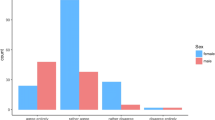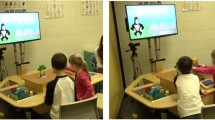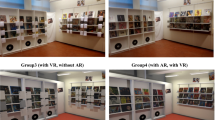Abstract
Volumetric imaging (computed tomography and magnetic resonance imaging) provides increased diagnostic detail but is associated with the problem of navigation through large amounts of data. In an attempt to overcome this problem, a novel 3D navigation tool has been designed and developed that is based on an alternative input device. A 3D mouse allows for simultaneous definition of position and orientation of orthogonal or oblique multiplanar reformatted images or slabs, which are presented within a virtual 3D scene together with the volume-rendered data set and additionally as 2D images. Slabs are visualized with maximum intensity projection, average intensity projection, or standard volume rendering technique. A prototype has been implemented based on PC technology that has been tested by several radiologists. It has shown to be easily understandable and usable after a very short learning phase. Our solution may help to fully exploit the diagnostic potential of volumetric imaging by allowing for a more efficient reading process compared to currently deployed solutions based on conventional mouse and keyboard.






Similar content being viewed by others
References
Rubin GD: Data explosion: the challenge of multidetector-row CT. Eur J Radiol 36:74–80, 2000
Andriole KP, Morin RL, Arenson RL, Carrino JA, Erickson BJ, Horii SC, Piraino DW, Reiner BI, Seibert JA, Siegel E: Addressing the coming radiology crisis—the society for computer applications in radiology transforming the radiological interpretation process (TRIP) initiative. J Digit Imaging 17(4):235–243, 2004
Rubin GD: 3-D Imaging with MDCT. Eur J Radiol 45(Suppl 1):37–41, 2003
Cody DD: AAAPM/RSNA physics tutorial for residents: topics in CT. Image processing in CT. Radiographics 22:1255–1268, 2002
Addis KA, Hopper KD, Iyriboz TA, Liu Y, Wise SW, Kasales CJ, Blebea JS, Mauger DT: CT angiography: in vitro comparison of five reconstruction methods. AJR Am J Roentgenol 177:1171–1176, 2001
Haramati N: Interpretation strategies for large cross-sectional image data sets. In: Reiner BI, Siegel EL Eds. SCAR University 2003, Educating Healthcare Professionals for Tomorrow’s Technology, The Society for Computer Applications in Radiology, VA, Great Falls, 2003, pp 169–172
Kockro RA, Serra L, Yeo TT, Chan C, Sitoh YY, Chua GG, Ng H, Lee E, Lee YH, Nowinski WL: Planning and simulation of neurosurgery in a virtual reality environment. Neurosurgery 46(1):118–137, 2000
Reitinger B, Bornik A, Beichel R, Werkgartner G, Sorantin E: Tools for augmented reality based liver resection planning. In: Galloway RL Jr Ed. Medical Imaging 2004: Visualization, Image-guided Procedures, and Display. Proceedings of the SPIE, volume 5367, 2004, pp 88–99
Teistler M, Bott O, Dormeier J, Pretschner DP: Virtual Tomography: a new approach to efficient human–computer interaction for medical imaging. In: Galloway RL Jr Ed. Medical Imaging 2003: Visualization, Image-guided Procedures, and Display. Proceedings of the SPIE, volume 5029, 2003, pp 512–519
Teistler M, Dormeier J, Dresing K, Franzen O, Habermann C, Bergmann J: The future viewing station: an intuitive and time-saving user interface beyond keyboard and mouse to improve CT and MRI based diagnosis (abstract). Radiology Suppl 225(P):764, 2002
Teistler M, Lison L, Dormeier J, Pretschner DP: Improving medical imaging understanding by means of virtual and augmented reality (abstract). Radiology Suppl 221(P):731, 2001
Jabs M, Saboor S, Lison T, Teistler M, Pretschner DP: How to read CT and MRI images with novel 3D techniques—managing exploration paths to improve the diagnostic process (abstract). In: RSNA ’03 Scientific Assembly and Annual Meeting Program, Radiological Society of North America, Oak Brook, IL, 2003, p 805
Teistler M, Nowinski WL, Rado Y, Breiman RS, Bott OJ, Lison T: Data explosion in radiology: solving the problem on the user interface side (abstract). In: RSNA ’04 Scientific Assembly and Annual Meeting Program, Radiological Society of North America, Oak Brook, IL, 2004, p 831
Jones RM: Introduction to MFC Programming with Visual C++, Microsoft Technologies Series. NJ: Prentice Hall, 1999
DCMTK-DICOM: DCMTK-DICOM-Toolkit, Kuratorium OFFIS e. V. Oldenburg, Germany: DCMTK-DICOM. Available at http://dicom.offis.de/dcmtk.php.de
Wernecke J: The Inventor Mentor, Programming Object-oriented 3D Graphics with Open Inventor, Release 2. Ontario, Canada: Addison Wesley Longman, 1994
TGS Inc: Open Inventor VolumeViz. San Diego, CA: TGS Inc., 2002. Available at http://www.tgs.com/support/datasheet/VolumeViz.pdf
Wilson O, Gelder AV, Wilhelms J: Direct Volume Rendering Via 3D Textures. Technical Report UCSC-CRL-94-19. Santa Cruz: University of California, 1994
Polhemus Inc: Fastrak. Colchester, VT: Polhemus Inc.,2004. Available at http://www.polhemus.com/?page=Motion_Fastrak
Ascension Technology Corporation: pciBIRD. Burlington, VT: Ascension Technology Corporation, 2005. Available at http://www.ascension-tech.com/products/pcibird.php
Neider J, Woo M: The Official Guide to Learning OpenGL, Version 1.2. OpenGL Architecture Review Board, Addison-Wesley Longman, Amsterdam, 1999
Author information
Authors and Affiliations
Corresponding author
Rights and permissions
About this article
Cite this article
Teistler, M., Breiman, R.S., Lison, T. et al. Simplifying the Exploration of Volumetric Images: Development of a 3D User Interface for the Radiologist’s Workplace. J Digit Imaging 21 (Suppl 1), 2–12 (2008). https://doi.org/10.1007/s10278-007-9025-8
Published:
Issue Date:
DOI: https://doi.org/10.1007/s10278-007-9025-8




